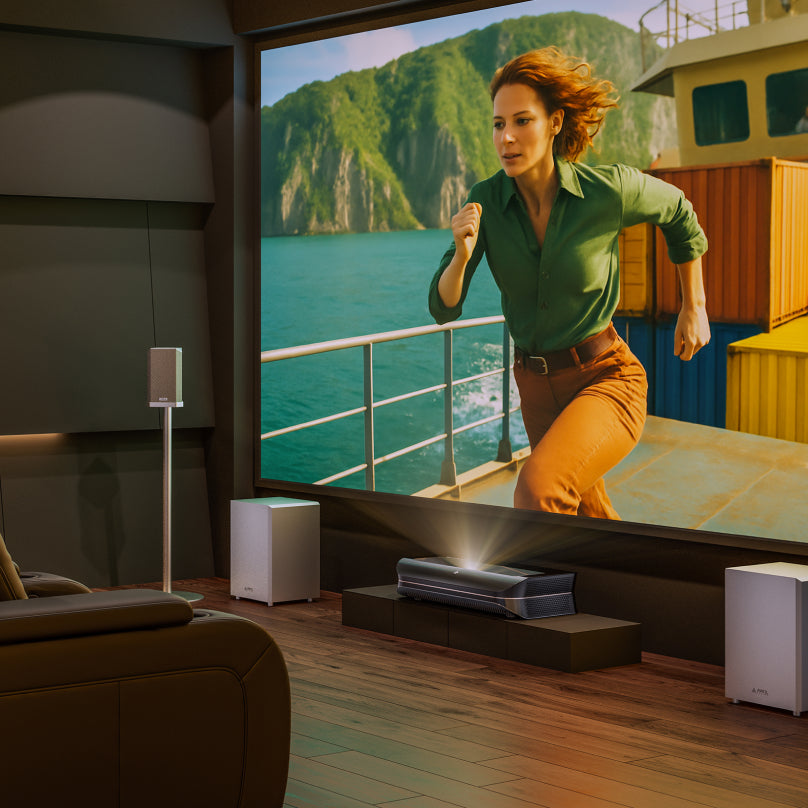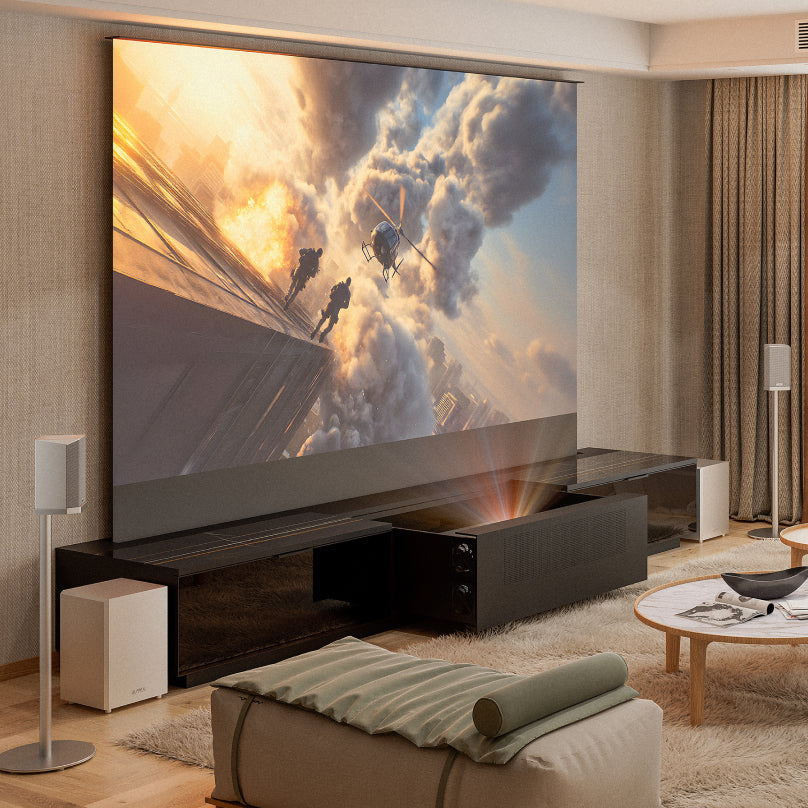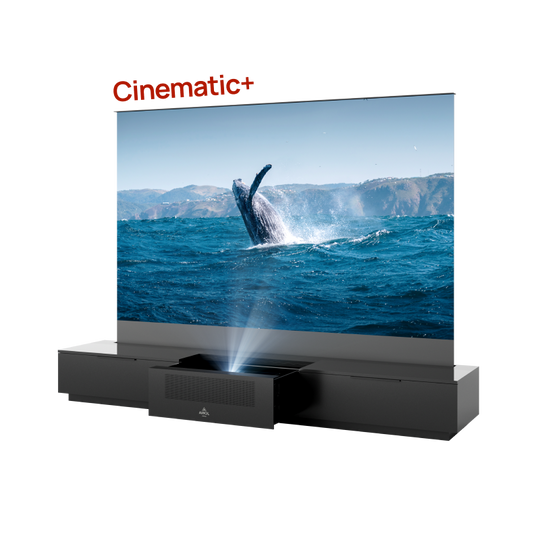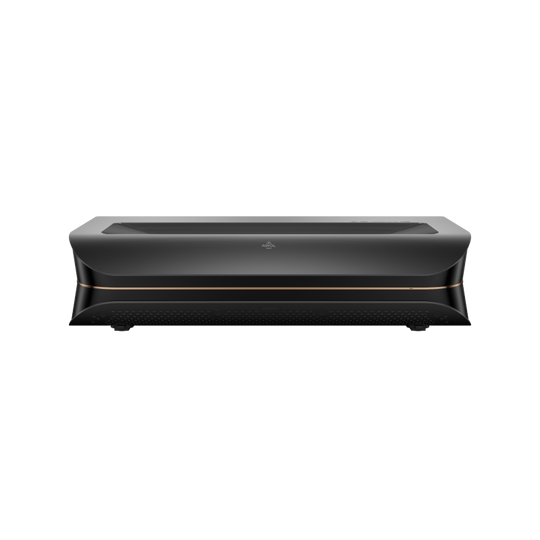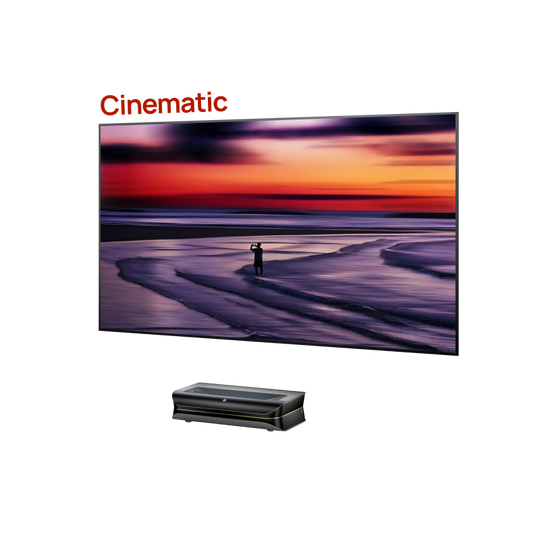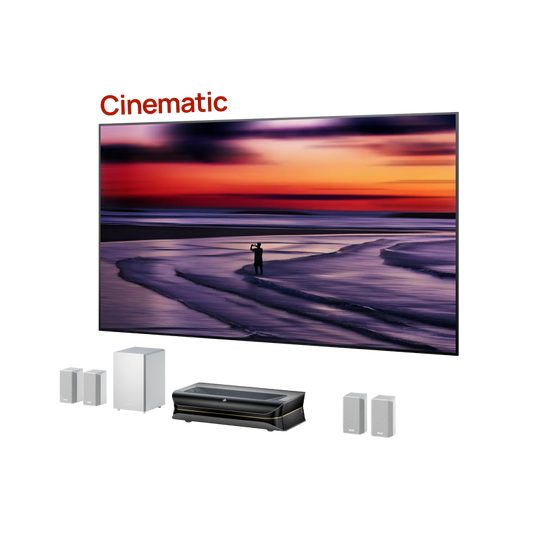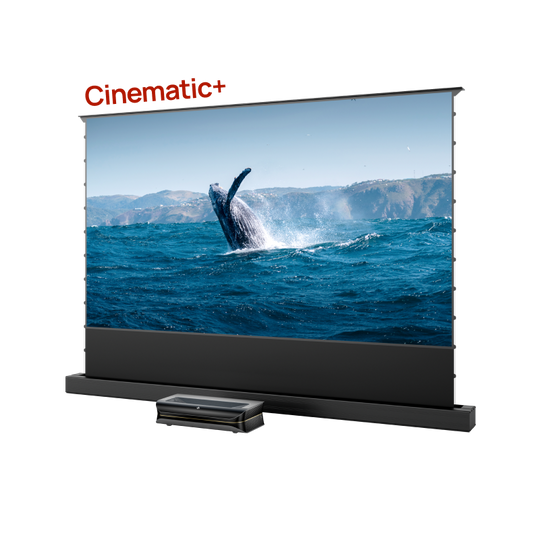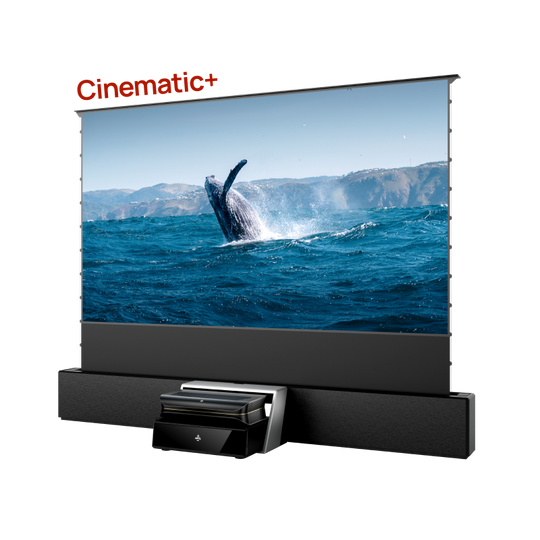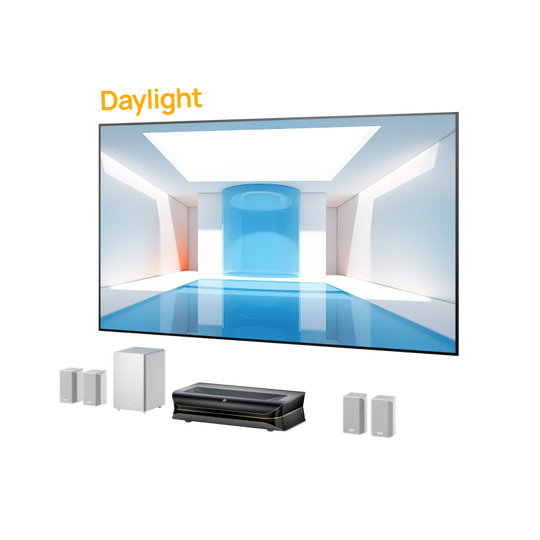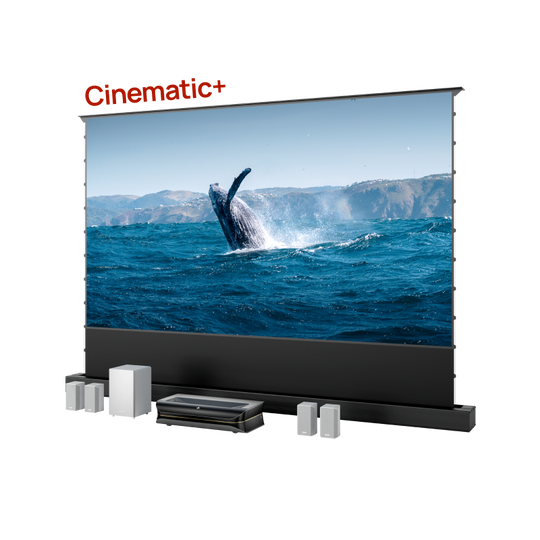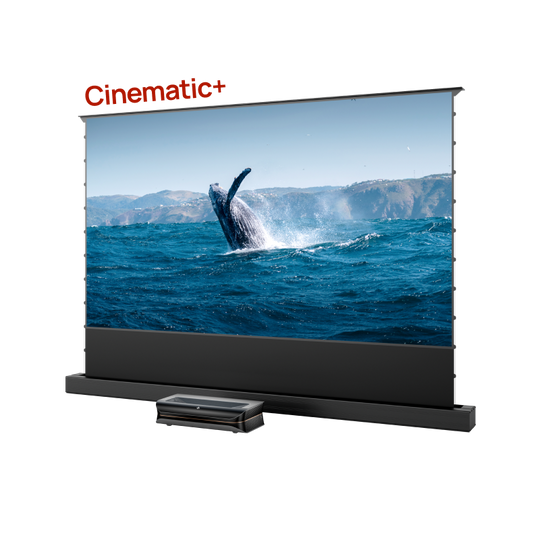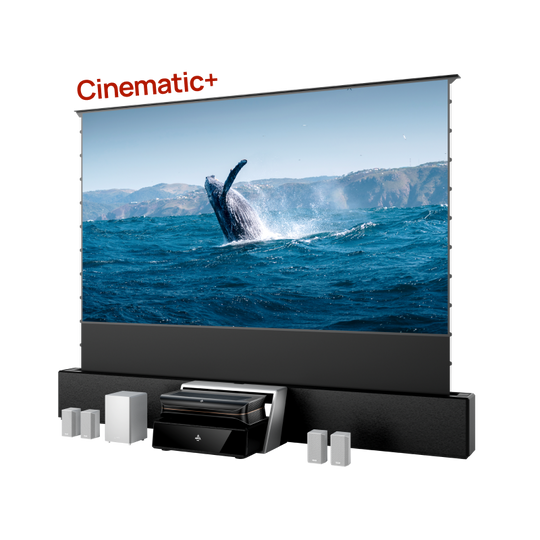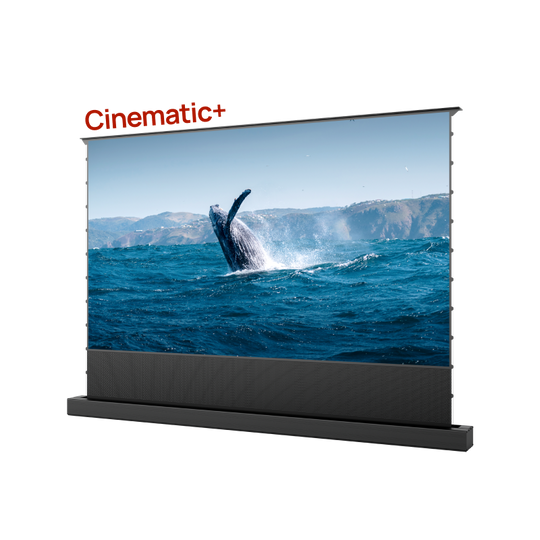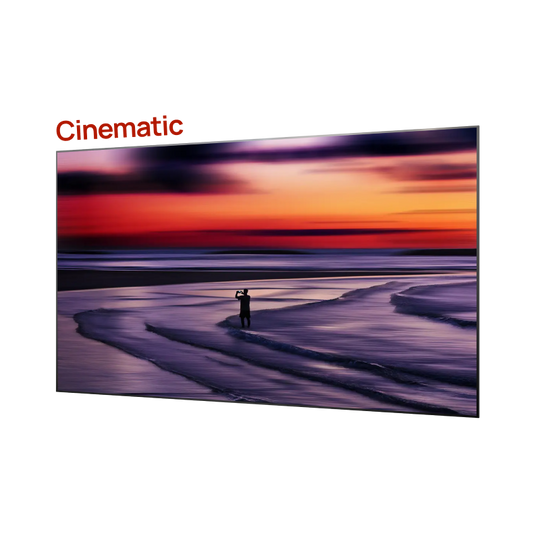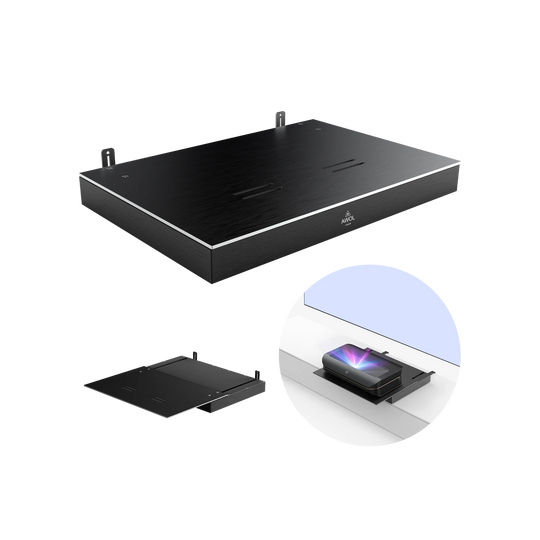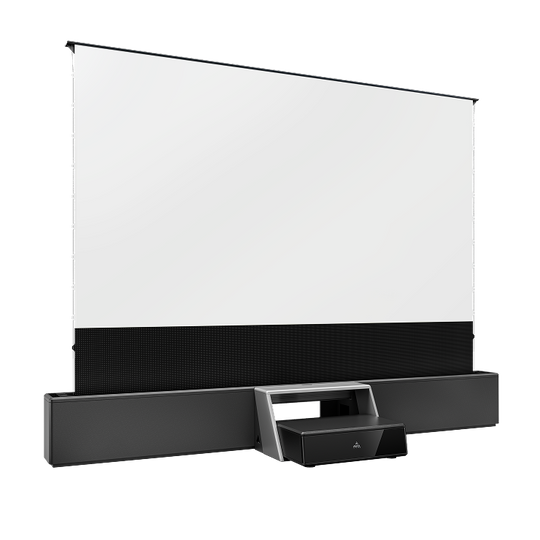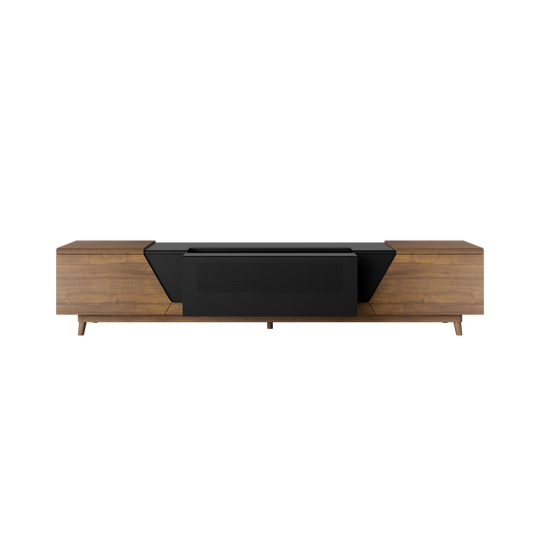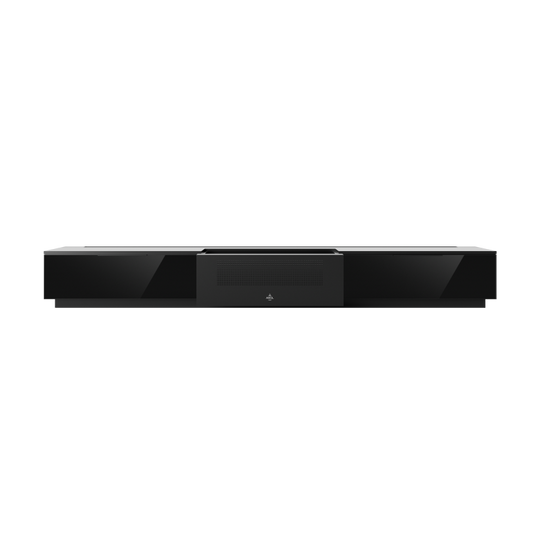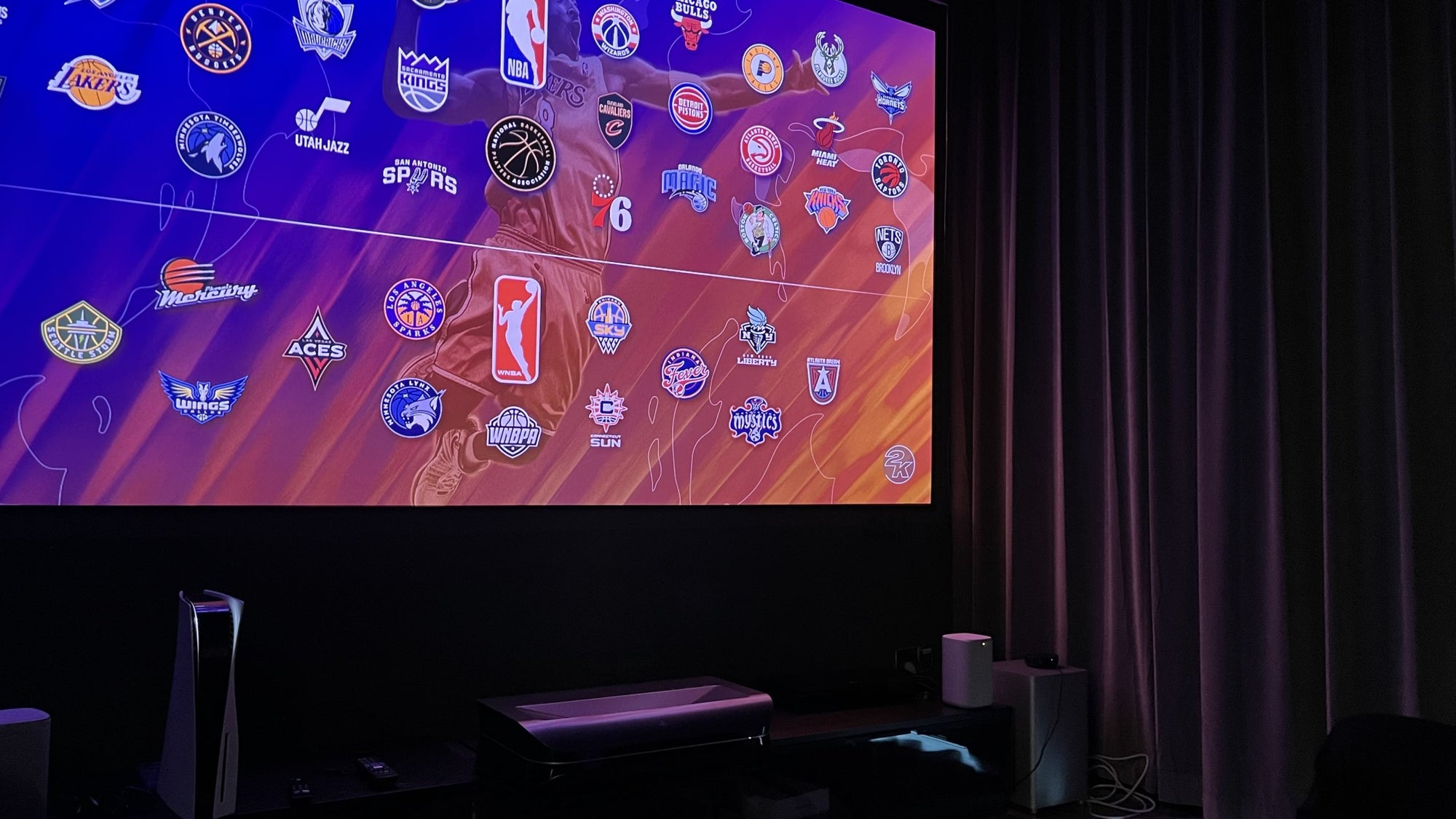When setting up a projector in your home theater, choosing the right screen color is crucial. There are two widely used screen materials: the traditional white screen, which has been used for decades, and the light gray to medium gray screen. Each option offers a distinct viewing experience, affecting the luminosity, clarity, and vibrancy of the images projected, depending on the ambient light in your room. This guide will help you understand the key differences between gray and white projector screens and aid you in selecting the optimal choice to elevate the atmosphere of your media room.
What Are Gray Projector Screens?
Gray projector screens are embedded with a dark gray tint that helps in diffusing external light, minimizing reflectance, and enhancing image quality. This makes them suitable for environments with varying lighting conditions, as they prevent images from appearing washed out. Gray screens improve black levels and color depth, offering a clearer and more detailed viewing experience.
In room environments where light control is less achievable—such as living rooms, conference rooms, or classrooms—gray screens offer a viable solution. Their ability to improve black levels and color depth ensures a clearer and more detailed viewing experience, which is ideal not only for home theaters but also for professional and educational settings.
What Are White Projector Screens?
White projector screens are distinguished by their highly reflective surfaces. These screens are designed to amplify the brightness and vibrancy of a projector’s output, which enhances color vibrancy and ensures high-quality image reproduction. They are particularly effective in scenarios where the room is fully dark and the lighting is well controlled. For example, dedicated home theaters where precision in color and detail is critical. Their ability to reflect more light makes them ideal for creating an immersive cinematic experience in dark settings.
Comparing Key Attributes: Gray vs White Projector Screens
When choosing between gray and white projector screens, consider two main factors: the ambient lighting in your environment and the type of projector you are using.
Ambient Light Considerations
The ambient lighting in your viewing environment is a critical factor in selecting the appropriate projector screen. White screens are best suited for environments with low ambient light. In such settings, they excel by maximizing the effects of their high reflectivity to enhance image brightness and color vibrancy. Conversely, gray screens are preferred in environments with brighter ambient light. Their ability to absorb and scatter light makes them excellent for maintaining visibility and clarity, even in mixed lighting conditions.
Projector Type and Screen Performance
The type of projector you use can greatly influence your screen choice. White screens often work well with projectors that have high light output, as they can enhance the brightness and vividness of the images. Gray screens, however, might be more suitable for projectors with lower light output. The gray hue of these screens helps enhance the projector's contrast and black levels, which is critical for projectors that emit less light.
Summary of Performance Under Various Conditions:
- Color Accuracy and Contrast: Gray screens maintain color fidelity and contrast more effectively across different viewing angles, making them ideal for situations where the projector's brightness is not at its maximum. White screens, however, provide optimal performance in the dark rooms, where their qualities can fully produce sharp contrasts and vivid colors.
- Luminosity and Brightness: For optimal display dynamics, white screens significantly enhance perceived brightness and color vibrancy under ideal conditions, making them ideal for high-end home theaters. Meanwhile, gray screen materials help maintain black levels even in the presence of ambient light, ensuring a more vivid picture in brighter environments.
Beyond Gray and White Screens – A Third Option: ALR
Ambient Light Rejecting (ALR) screens present a third, highly effective option for projector enthusiasts. ALR technology is designed to excel in various lighting conditions by significantly reducing the impact of ambient light. This capability preserves color accuracy and contrast, making ALR screens an excellent choice for those looking to enjoy high-quality visuals without the constraints of a controlled lighting environment.
AWOL Vision exemplifies this advanced technology with its Cinematic Projector Screen. Tailored to thrive under different lighting conditions, the Cinematic ALR screen offers an optimal solution for those seeking versatility without compromising on visual quality. AWOL Vision provides a variety of screen options to suit diverse needs, including floor rising and wall-mounted models in various sizes. These range up to 150 inches, catering to extensive home theater setups, and include the world’s first 132-inch seamless screen, offering an unparalleled viewing experience.
Final Thought
The choice between a gray or white projector screen ultimately depends on your specific home theater layout, projector capabilities, and ambient light control. Each has its unique advantages that can enhance your viewing experience. Consider these factors carefully to select the screen that best fits your entertainment needs.
